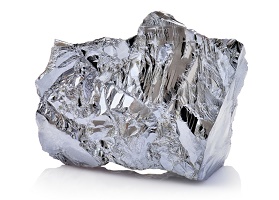We elaborate the uses of Platinum and atomic properties with characteristics. Platinum is a grayish-white chemical element with atomic number 78. Its symbol is Pt and it belongs to the group of transition metals and its normal state in nature is solid. Platinum is located at position 78 on the periodic table.
You Can Visit Our Managed: Periodic Table Main Page
On this page you can discover the chemical properties of platinum and information about platinum and other elements of the periodic table such as palladium, darmstadtium, iridium or gold. You will also learn what platinum is for and you will know its uses through its properties associated with platinum such as its atomic number or the usual state in which platinum can be found.
You will be able to see qualities of platinum such as its melting and boiling point, its magnetic properties or what its chemical symbol is. In addition, here you will find information about its atomic properties such as the distribution of electrons in platinum atoms and other properties.
For some elements, part of this information is unknown. In these cases we show the properties attributed to them.
Platinum Properties
The transition metals, also called transition elements, is the group to which platinum belongs. In this group of chemical elements to which platinum belongs, are those located in the central part of the periodic table, specifically in block d. Among the characteristics that platinum has, as well as those of the rest of transition metals, is that of including in its electronic configuration the d orbital, partially filled with electrons. Properties of this type of metal, among which platinum is found, are its high hardness, having high boiling and melting points and being good conductors of electricity and heat.
Platinum in its natural form is solid. Platinum is a grayish-white chemical element and belongs to the group of transition metals. The atomic number of platinum is 78. The chemical symbol for platinum is Pt. The melting point of platinum is 2041.4 degrees Kelvin or 1769.25 degrees Celsius, or degrees Centigrade. The boiling point of platinum is 4098 degrees Kelvin or 3825.85 degrees Celsius or degrees Celsius.
Atomic properties of platinum
The atomic mass of an element is determined by the total mass of neutrons and protons that can be found in a single atom belonging to this element. Regarding the position to find platinum within the periodic table of elements, platinum is in group 10 and period 6. Platinum has an atomic mass of 195.078 u.
The electron configuration of platinum is [Xe] 4f145d96s1. The electronic configuration of the elements determines the way in which the electrons are structured in the atoms of an element. Platinum’s mean radius is 135 pm, its atomic radius or Bohr radius is 177 pm, its covalent radius is 128 pm, and its Van der Waals radius is 175 pm.
You Can Visit Our Managed: Periodic Table Main Page
Platinum Characteristics
Below you can see a table that shows the main characteristics of platinum.
| Platinum | ||
|---|---|---|
| Chemical symbol | Pt | |
| Atomic number | 78 | |
| Group | 10 | |
| Period | 6 | |
| Appearance | grayish white | |
| Block | d | |
| Density | 21450 kg / m3 | |
| Atomic mass | 195,078 u | |
| Medium radius | 135 pm | |
| Atomic radio | 177 | |
| Covalent radius | 128 pm | |
| Van der Waals radio | 175 pm | |
| Electronic configuration | [Xe] 4f145d96s1 | |
| Oxidation states | 2, 4 (medium basicity) | |
| Crystal structure | face-centered cubic | |
| State | solid | |
| Melting point | 2041.4 K | |
| Boiling point | 4098K | |
| Heat of fusion | 19.6 kJ / mol | |
| Vapor pressure | 0.0312 Pa at 2045 K | |
| Electronegativity | 2.28 (Pauling) | |
| Specific heat | 130 J / (kg K) | |
| Electric conductivity | 9.66 × 106 / m Ω | |
| Thermal conductivity | 71.6 W / (mK) | |
You Can Visit Our Managed: Periodic Table Main Page




